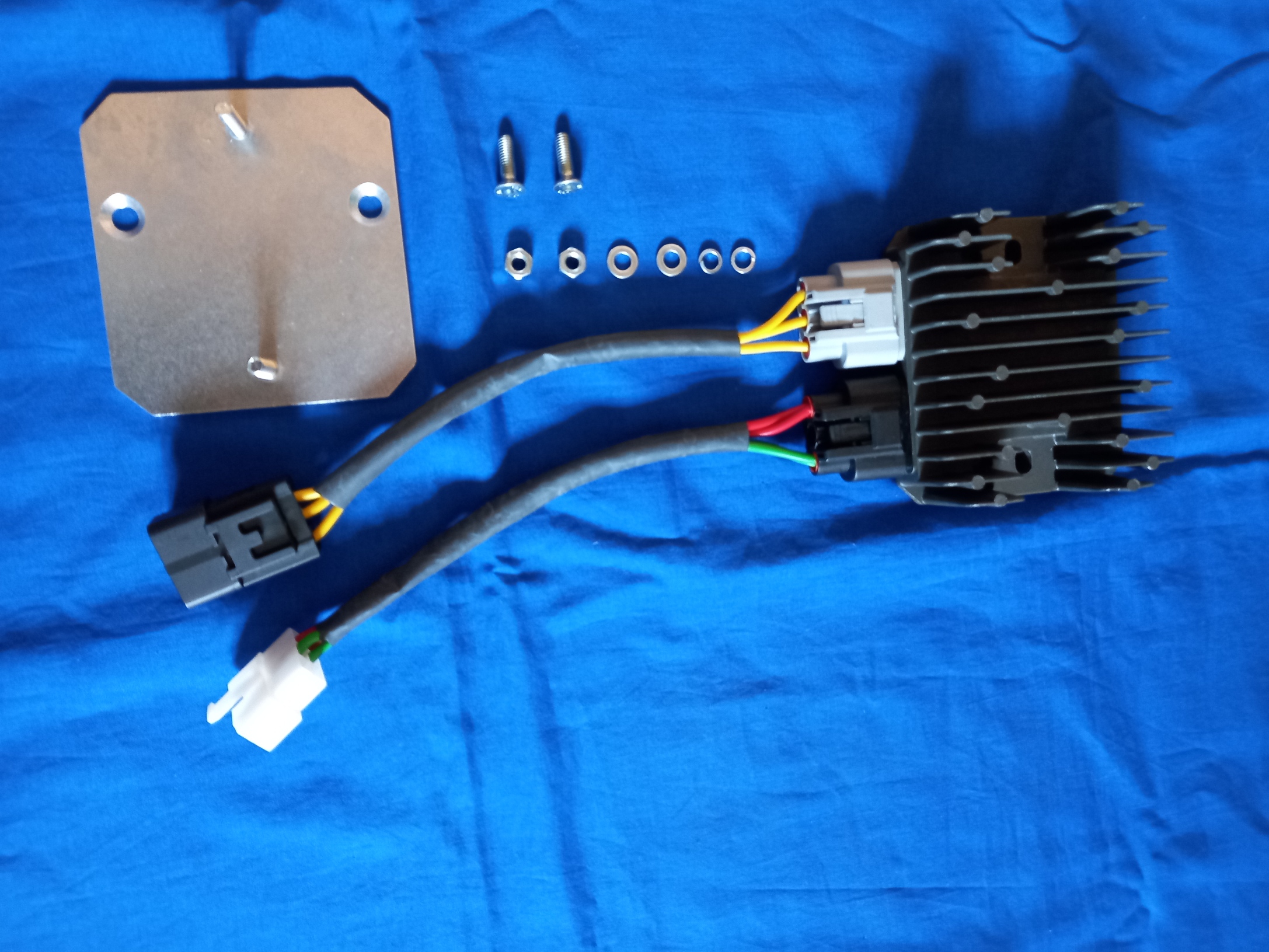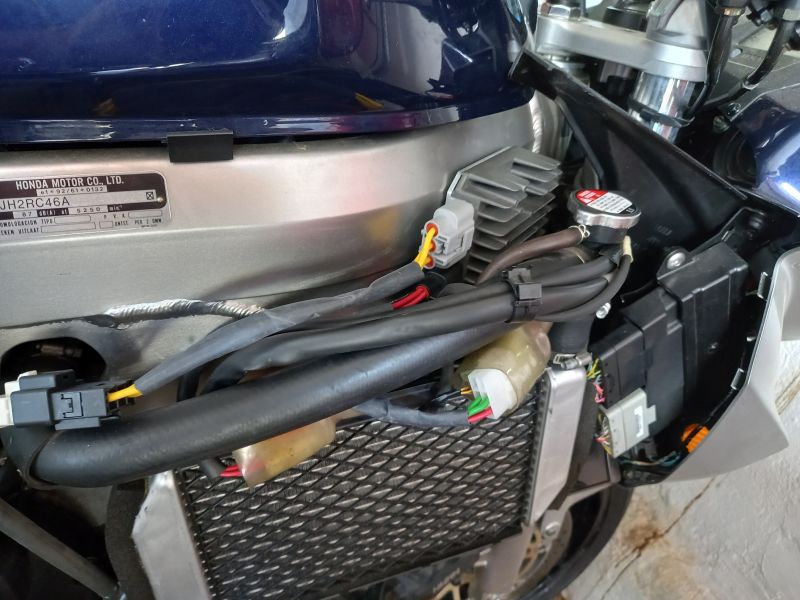From advertising
  | Regulator (36-LRK246) [Electric - Regulator - Generator] longitudinal regulator (similar to SH847AA), complete with wiring kit and mounting parts. Please notice "Details" Suitable for: Important notice: Technical information Current voltage regulators have the rectifier and regulator built into one housing. For permanently excited alternators, so-called shunt regulators (cross regulators) are usually used for voltage conversion. The cross-regulator converts excess energy supplied by the alternator into heat via a resistor (shunt). Problems: Overheating of the voltage regulator and this regulation also converts part of the power in the stator winding into heat. The alternator always runs at 100% with this control. With powerful alternators (e.g. Aprilia RSV1000 approx. 500W), this continuous load can cause the insulation of the winding wire to overheat, resulting in short circuits in the coil towers (windings). Shunt regulators are designed using thyristor or MOSFET technology. The MOSFET design of the controller results in less power loss, which means that the controller does not get quite as hot as with a thyristor design. The function or mode of operation of the longitudinal controller presented here is different: When the battery is full, the voltage regulator interrupts the stator circuit, as a result of which the alternator no longer supplies any current. This reduces the temperature load on the stator and significantly reduces the likelihood of the coil towers overheating. If a longitudinal regulator is used instead of a shunt regulator, the current load on the stator winding is halved. Our longitudinal regulator art. no. 36-LRK246 is similar to SH847AA. This regulator also works without problems at higher speeds and currents (short-term load up to approx. 50A at 13.5V, tested). 209.00 € |
